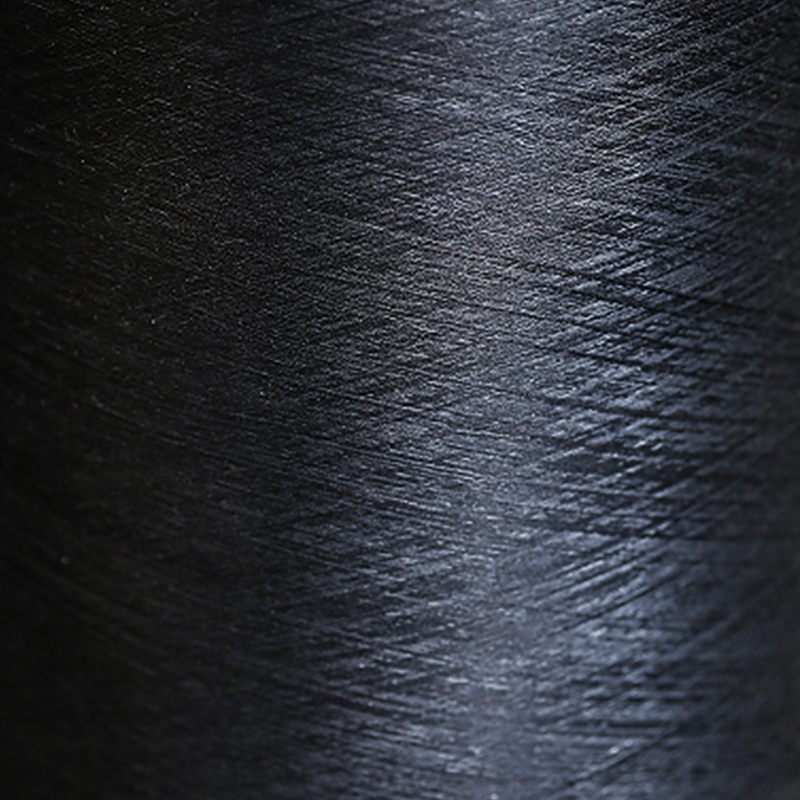 0571-82995618
0571-82995618 [email protected]
[email protected]- Wholesale Blended Fabrics Manufacturers
Types of polyester filaments, polyester filaments are generally divided into three categories: spun yarn, drawn yarn and textured yarn
Polyester is an important variety of synthetic fibers, and it is the trade name of polyester fiber in my country. It is a fiber-forming polymer prepared from purified terephthalic acid (PTA) or dimethyl terephthalate (DMT) and ethylene glycol (MEG) through esterification or transesterification and polycondensation reactions ——Polyethylene terephthalate (PET), a fiber made by spinning and post-processing. The so-called polyester filament is a filament with a length of more than one kilometer, and the filament is wound into a group. According to different production methods, polyester filaments are generally divided into three categories: spun yarn, drawn yarn and textured yarn.

One, nascent silk
The nascent yarn refers to the yarn that has not been stretched and changed by direct melt spinning. According to the different spinning speed, it is generally divided into undrawn yarn (UDY), semi-pre-oriented yarn (MOY), and pre-oriented yarn (POY) , Highly oriented yarn (HOY).
1. Undrawn yarn (UDY): Its fiber molecules are basically not oriented and not crystallized. This type of yarn has low strength, large elongation, and poor dimensional stability, and generally cannot be used directly.
2. Semi-oriented yarn (MOY): The fiber molecules have a small amount of orientation, and the degree of orientation is higher than UDY but lower than pre-oriented yarn. The structural state of this kind of yarn is still not stable enough and cannot be used directly.
3. Pre-oriented yarn (POY): The fiber itself has been moderately stretched, has a certain degree of orientation, and has a small amount of microcrystalline grains, but it is still lower than the requirements of the finished yarn. This kind of silk has low strength and high elongation. Generally, it is still not suitable for processing fabrics directly, but it can be combined with other fibers to produce composite silk to meet the needs of weaving and give the fabric a special style.
4. Highly oriented yarn (HOY): It is made by one-step ultra-high-speed spinning, with high molecular orientation and good dyeing performance of the fiber, but the elongation and heat shrinkage are large, which cannot meet the general requirements of wearing.
Second. Stretched wire
Drawn yarn refers to the fiber obtained by moderately stretching the fiber during the spinning process. According to the degree of stretching, it can be divided into drawn yarn (DY) and fully drawn yarn (FDY)
1. Stretched yarn (DY): refers to the yarn made by low-speed drawing during the spinning process. Its crystallinity is about 40%. This kind of yarn is straight, smooth and closely arranged with each other, but Poor fluffy.
2. Fully drawn yarn (FDY): refers to the yarn made by the one-step method of spinning and drawing. This kind of yarn has stable quality, less wool, fewer ends, and good dyeing uniformity. It is ideal for high-speed weaving processing. yarn. Its products are also widely used and have a large market capacity. It is currently one of the main raw materials for domestic home textiles and clothing fabrics.
Third, textured wire
Utilizing the characteristics of synthetic fiber being plasticized and deformed by heat, under the action of machinery and heat, the straight fiber becomes crimped fiber, which is called textured yarn, also called textured fiber. According to the different raw materials and processing technology, it can be divided into conventional textured yarn (TY), stretch textured yarn (DTY) and air textured yarn (ATY).
1. Conventional textured yarn (TY): It is a silk produced by a three-step process of spinning winding-drawing twisting-false twisting or a high-speed spinning-low-speed false twisting process. It has certain elasticity and bulkiness, and good dimensional stability.
2. Stretch-textured yarn (DTY): Generally, POY is used as raw material, and it is a low-elastic yarn made by one-step stretching and deformation method. It has certain elasticity and is not as soft as TY, but the quality is stable, and the strength and elongation have met the requirements of taking .
3. Air textured yarn (ATY): refers to the use of air jet method to make the air jet technology to intertwin the tow, forming irregular twisted loops, so that the tow has a fluffy loop-like yarn. It is generally produced with FDY as raw material, and some products can also be produced with POY as raw material, and the finished products are used to produce home textile fabrics.

Hangzhou Jinfeng Textile Co., Ltd